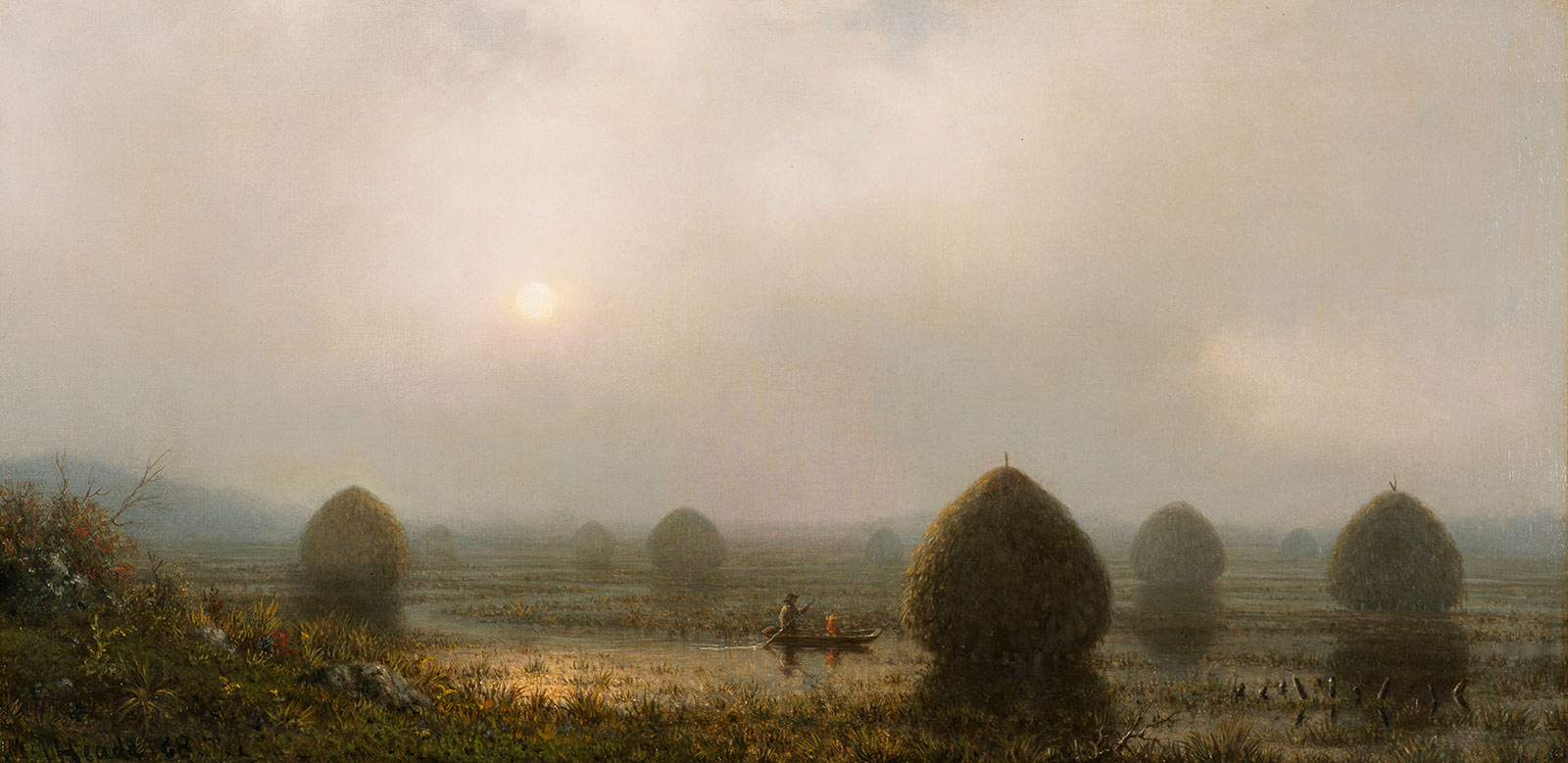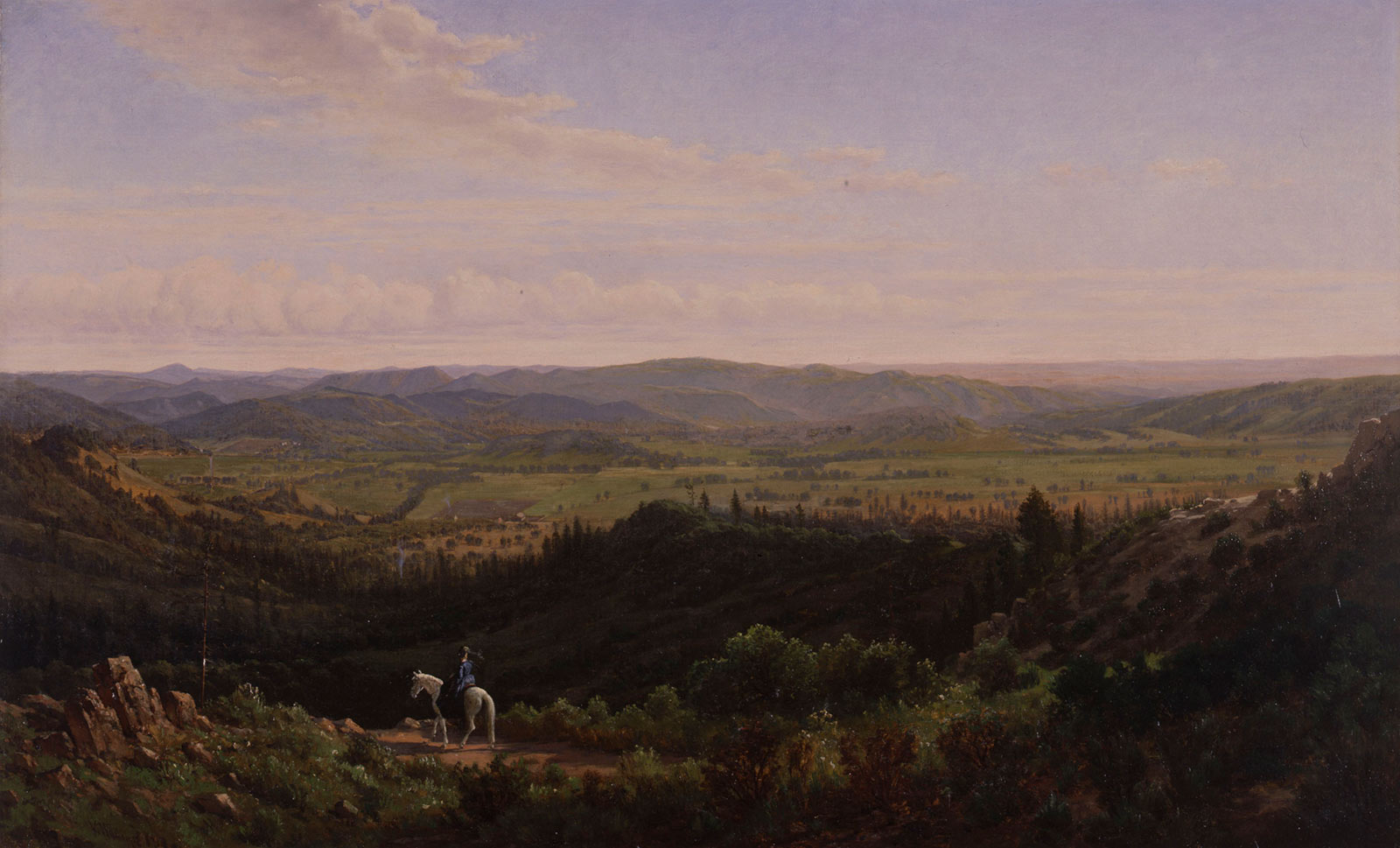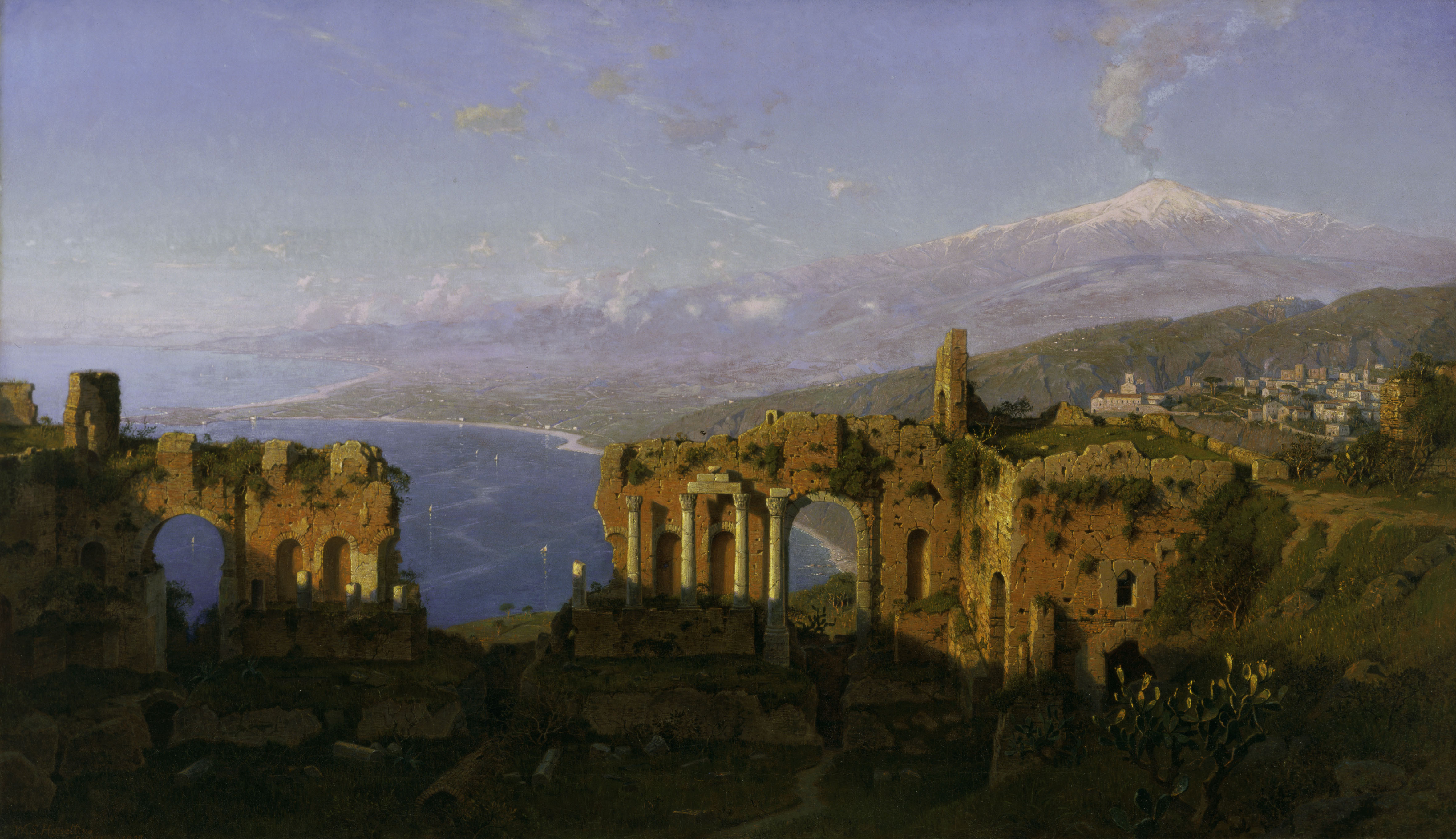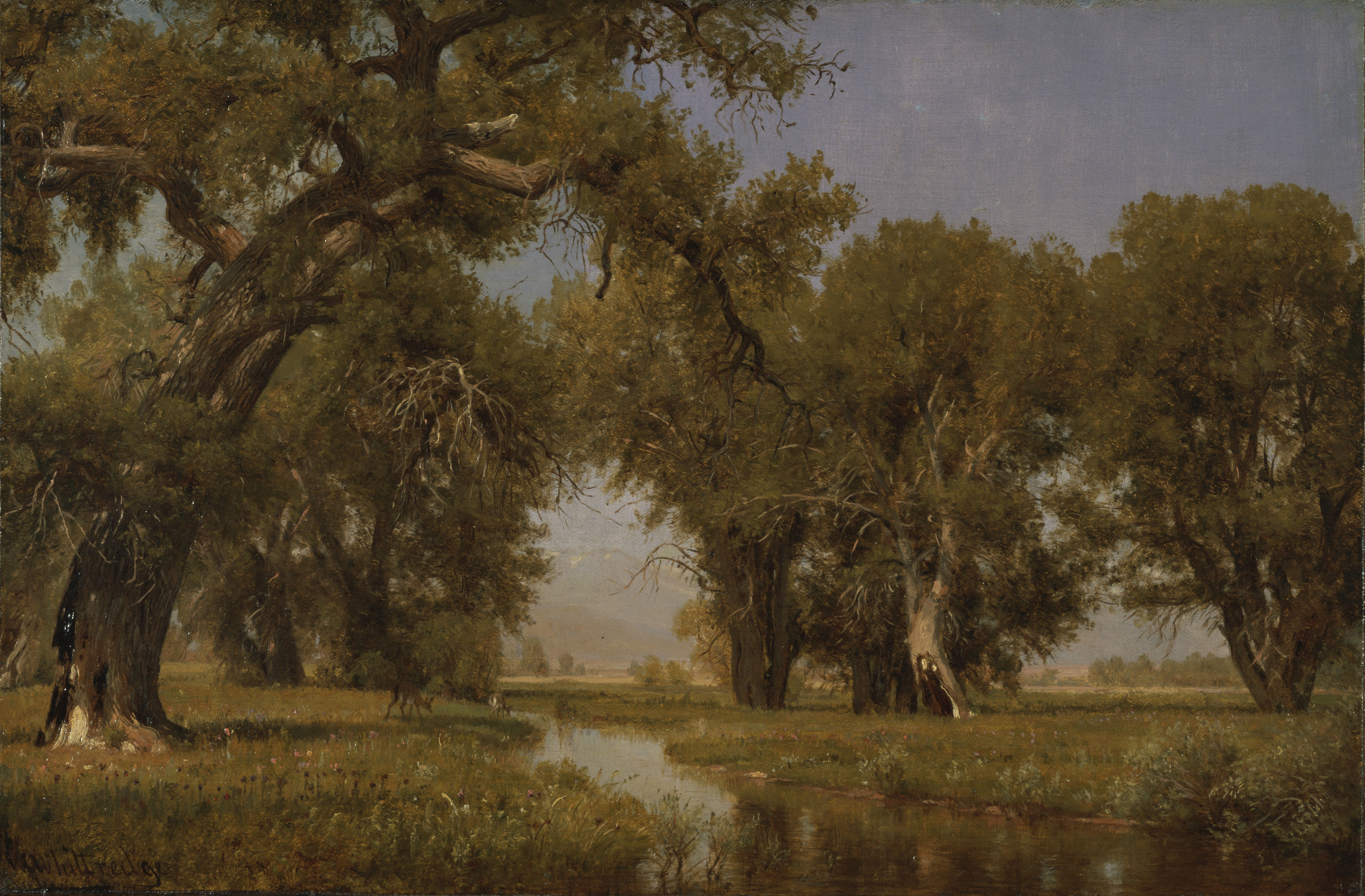The Great Swamp

What do you do to protect the environment?
Heade painted 120 views of salt marshes, natural farmlands where laborers harvested black marsh grasses and gathered them into haystacks to dry. The artist first went into the marshes to hunt and fish, developing a deep appreciation for the productive relationship between humans and the land. The two figures in the canoe—likely a father and son—may have symbolized the future generations that would benefit from protecting and maintaining such natural resources.


